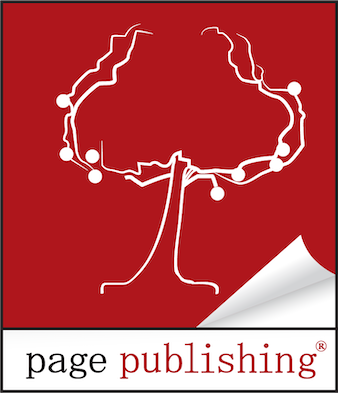
It’s said that roughly half of Americans want to write a book, but only about fifteen percent actually start that book, and even fewer complete it. If you’re among this percentage who have a book idea but don’t know where to start, you’ve come to the right place. In this post, we’ll cover all the details of writing a book, including everything from story development to the nitty-gritty of timing and even post-writing steps. Use this handy guide to jumpstart your creativity and get your book project off the ground. Because at the end of the day, only YOU can write your book. Stop waiting—it’s time to turn your dream into reality.
What type of book do you want to write?
In general, fiction refers to stories created from the author’s imagination. The plot, setting, and characters are made-up, and while they can sometimes be based on actual events, the details are fabricated or used as inspiration. Most novels, novellas, and short stories are categorized as fiction.
On the other hand, non-fiction books are factual and focus on actual events, including history, biographies, self-help, business resources, and more. Moreover, these books are objective, reporting the truth rather than stretching it.
An intriguing combination of fiction and non-fiction is a category referred to as narrative non-fiction, which uses elements of fictional storytelling to make non-fiction books compelling and dramatic. Creative non-fiction is a newer trend gaining popularity for both writers and readers.
Now that you know the difference between the categories let’s dive a little deeper into fiction and talk about genres.
Common Fiction Genres
What’s a genre? When it comes to fiction, stories are put into sub-categories based on style, plot elements, and tone. Here are the most common fiction genres:
Literary Fiction
Works of literary fiction are character-driven rather than plot-driven and focus on the inner character’s journey. These books are often considered highly artistic and don’t necessarily follow the typical format or tropes of genre fiction.
Mystery
Mystery novels follow a detective or law enforcement as they try to solve a case. Stories often center around a case or crime, and the duration of the book drops hints to resolve all questions by the conclusion.
Thriller / Suspense
Thrillers are plot-driven, suspenseful novels that typically have dark elements. They keep readers turning pages by utilizing cliffhangers and twists.
Romance
Romance novels center on the relationship of two people, with a lighthearted storyline that reaches a satisfying conclusion. These books can range from steamy to clean and sometimes include the sub-genre of “chick lit.”
Historical
Historical fiction transports readers to another time and place from the past. It’s a vast category, including everything from the beginning of time through recent history. As a result, historical novels require extensive research into the time period, especially if they involve real people and events.
Science Fiction / Fantasy
Sci-fi is a broad book category that includes elements, not from the real world. This genre is speculative fiction and dystopian fiction, which explore imaginary universes, time travel, futuristic settings, and worlds without boundaries.
Horror
Horror novels include ghosts, demons, monsters, and more, with the intent of scaring or shocking readers. These books make readers’ hair stand on end and create unease while reading.
Magical Realism
Unlike sci-fi/fantasy, magical realism centers on the real world with magical elements sprinkled in. The imaginary elements are considered normal in the setting of the story.
Developing a Story Idea
Maybe you have a fully fleshed-out story in your head. Or you only have a few details in mind. One doesn’t need to look far for story ideas. Consider what’s going on in the world. Can you take a current event and put an imaginary spin on it? Look to your own experiences, or those of a friend or family member, then use those ideas as inspiration. Always ask yourself “what ifs” and let your mind wander to explore new ideas.
Once your story idea is solidified, start brainstorming titles. Many writers wait until the book is complete to give it a title, while others have a title in mind from the get-go. Either way, make sure the title is a reflection of the book and genre in which you’re writing. Research other books in your category to get a sense of style and trends, but don’t feel chained to them.
Elements of a Good Book
When it comes to crafting a readable, engaging novel, a few elements are considered crucial.
Character
Character development includes building primary and secondary characters that have depth, personality, and relatability. Their motivations must be clear, even if the reader disagrees with them. It’s essential to avoid “flat” characters—those that are presented at the surface level. Instead, aim for three-dimensional characters who feel rounded with strengths and flaws. Part of character development involves laying out the character arc and the transformation (internal journey) throughout the book.
When writing your cast, beware of cliches, which make characters less believable and can turn off readers. Instead, try to make your characters truly unique, just as all people are in real life. Of course, in your story, these rules apply to both the heroes and antiheroes (antagonists). But, believe it or not, even villains need to be well developed.
Conflict
There’s no story without some sort of conflict—this is what creates the plot. Something needs to happen to the character to set them off on their journey. And let’s be honest: No one wants to read a story where nothing happens. Conflict creates agency, which propels the story forward. It can be external or internal—everything from an asteroid pummeling toward Earth, or an affair rocking a marriage. Pacing your novel often depends on the type of conflict. Will your book be a slow burn? Or a runaway train barreling toward the end?
Tension
Conflict and tension work hand-in-hand. Beginning with the inciting incident (the event that sets the plot in motion), tension is crucial to keep the pages turning. You want readers to continue wondering what will happen next, how the conflict will get resolved, and whether the characters will get what they want. So, whether the tension is external or internal, keep the stakes high, constantly toying with what the character stands to lose.
Overall Theme
Some novels are purely for entertainment. However, others weave essential themes throughout the story, including the importance of family or friendship, the power of self and identity, sacrificial love, good versus evil, and many more. Sometimes books are tied to cultural movements, such as feminism or equality. In all of these cases, one of the author’s goals is to make the reader ask, “What is this book really saying?” Is there some sort of bigger or deeper meaning? If so, make sure it fits the genre and reader expectations.
A few more technical details
Point of View
Before you start writing, you should decide which point of view you want—that is, how you want your narrator positioned. First-person POV uses one (or more) of the characters as the narrator. The book will use “I” statements (“I did this,” “I said that”). First-person is considered closer, so the reader can get into the character’s head. On the other hand, third-person POV is where the author narrates from a more distant view, using “he/she” statements. Within this POV is the omniscient approach, where the narrator is all-knowing and can move freely through all characters’ minds.
There is no right or wrong when choosing a POV. It’s primarily a personal choice or one dictated by trends within genres. Some authors feel more comfortable writing one POV over another. If you’re unsure, try writing a scene in each to see which comes more naturally and feels right for the story.
Word Count
How long should my book be? It is a common question new authors face, and the good news is that there are standard guidelines based on genre. Generally speaking, novels range from 60,000 to 100,000 words. However, readers have come to know certain genres for specific lengths, particularly Sci-Fi/Fantasy, which often reaches up to 120,000 words. Some historical novels often lean toward the higher end due to world-building and extensive research. Anything less than 60,000 words would fit into the novella or short story category.
How long will it take to write my book?
This question is very personal, depending on many external factors like jobs or family needs. There are, however, a few ways to set yourself up for a streamlined writing process:
1. Research Phase
Even if you’re not writing historical fiction, every story requires some research. It could be coming up with ideas, character development, or even reading comp books. Other books require extensive research that could take significantly more time.
2. Outline Phase
Some authors consider themselves “pantsers” in that they write “by the seat of their pants.” On the flip side are plotters, who function best with a plan and outline. Determine where you fall and what level of outlining makes sense for you.
3. Drafting Phase
You’ve made it to the fun part—it’s time to write! Of course, no book is complete after a single draft, so be prepared to revise and edit many times (you could end up with four, six, or even ten drafts!). With that in mind, the drafting stage varies from author to author, depending on how much time is dedicated to writing. Some can produce a first draft in weeks, while others take months.
My book is done—now what?
Once you’ve drafted and revised (and revised some more), it’s time to get outside eyes on your manuscript. The first step is to find beta readers. These are readers who will read your book and provide big-picture feedback. Beta readers are not typically compensated for this service—they do it because they are avid readers and enjoy helping writers. Find betas outside your circle, meaning people who can be objective and unbiased (don’t use family and friends!).
Many authors are part of critique groups, where writers exchange manuscripts for review and feedback. Gathering opinions from average readers and experienced writers is a great way to cover all your bases. In addition, critique partners can view a manuscript with an eye for craft and mechanics.
Finally, all books should go through professional editing before publishing. Developmental editing looks at the manuscript’s structure and involves an in-depth analysis of what’s working and what’s not. Copyediting and proofreading go line by line to catch any typos and grammatical errors. All of these services can be hired out by professionals and freelancers.
Are you ready?
You’ve got the idea. You’ve done the planning. And now you know all the ins and outs of writing a book. So what are you waiting for?
